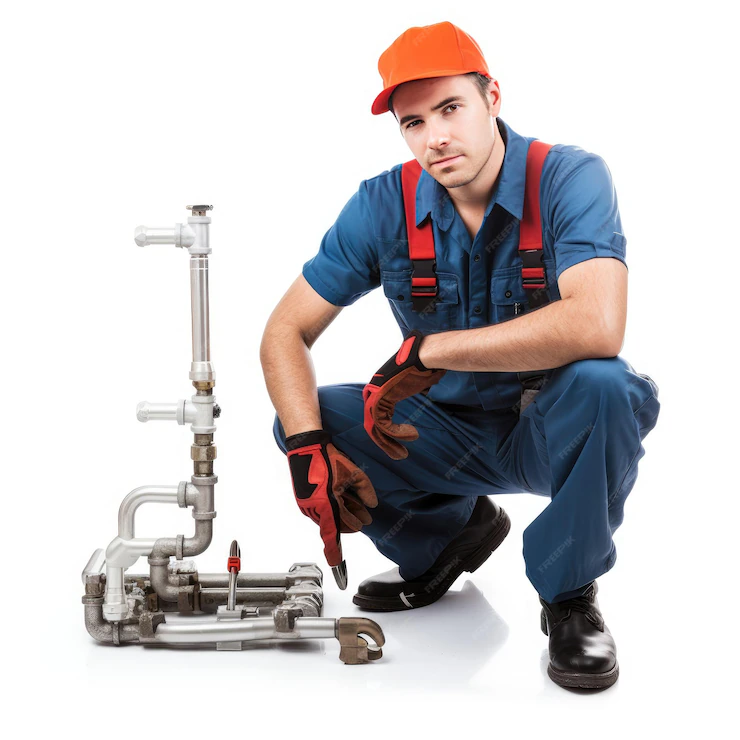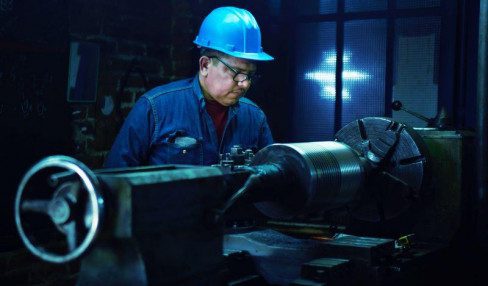Sustainability And Innovation In The Plumbing Sector
6 Mins Read
Published on: 11 January 2024
Last Updated on: 09 September 2024

toc impalement
Modern plumbing faces an imperative to balance precision with conservation. As climate change and water scarcity highlight the precariousness of freshwater globally, the sector recognizes a responsibility to promote efficient usage and leak reduction.
This article explores how technology innovations, regulation, and shifting mindsets are driving a sustainability transition across plumbing.
The Evolution Of Plumbing
The history of plumbing dates back thousands of years, showcasing human creativity in solving the age-old challenge of transporting water efficiently. Ancient Mediterranean and Middle Eastern civilizations developed elaborate irrigation methods for agriculture and aqueducts to direct water flows into growing cities.
Plumbing systems evolved over centuries from clay and stone to more durable cast iron and lead. During the 19th century, rising industrialization led cities to build extensive plumbing networks to serve denser populations, setting the foundation for modern indoor water supply and sanitation.
Today, plumbing underpins public health, agriculture, industry, and more – silence intricacies that impact every facet of human progress.
Innovative Plumbing Technologies
Technology has unlocked promising opportunities to align plumbing with sustainability goals. Dual flush toilets allow variable water volumes matching needs. Tankless heaters instantly supply hot water without standby energy losses from stored reserves.
Smart sensor networks detect leaks and pipe conditions in real-time, while connected fixtures enable monitoring and control from anywhere. Beyond household benefits, these technologies optimize usage across districts and cities through automation.
Innovation has also improved materials — plastic pipes resist corrosion and outlast metal equivalents. Combined with less invasive trenchless installation methods, this delays replacement cycles and repairs. Looking ahead, digitization and the Internet of Things will expand smart infrastructure coverage. With computing power in the loop, AI-driven analytics could dynamically operate plumbing for peak efficiency.
You can find out more about Ferguson’s Plumbing Group on Cylex Australia. As a leading supplier of plumbing products, Ferguson spearheads the promotion of efficient, green solutions – from HVAC systems to low-flow toilets and showers. Ferguson persists in offering high-performance, eco-friendly customer options globally.
Sustaining Water Resources
The planet’s surface water scarcely exceeds 1% of its total volume, underlying the importance of intelligent usage. Beyond moral motivations, growing populations and development constraints could compound water scarcity risks over time. Sustainable plumbing eases such pressures by promoting conservation beginnings at the tap. Low-flow fixtures restrict volumes for bathing, laundry, and more without lifestyle effects.
Smart irrigation tech maintains lawn health while tapping meteorological data to skip unnecessary schedules. Water recycling systems filter select household outflow for reuse in flushing and landscaping. Expanding such adoptions can significantly cut reliance on municipal reserves.
Conservation tech also often slashes energy demands from reduced heating and pumping needs. Through well-designed modern plumbing, people intersect sustainability with public welfare and future-proofing.
Energy-Efficient Plumbing Systems
Space heating and cooling loads also connect closely to plumbing infrastructure. As homes and buildings become more air-tight, properly sized and zoned hydronic radiators maintain comfort efficiently. Solar thermal systems employ panels to generate high-temperature fluids that drive heating devices. Geothermal heat pumps transfer warmth to structures in winter and vice versa in summer by leveraging shallow ground energy.
Modern boilers and water heaters extract over 95% of input fuel value, restricting jacketing losses, and condense moisture to recover latent heat. Efficient plumbing layouts locate fixtures close together, minimizing pipe runs and catalyzing rapid hot water delivery. Integrated system data guides predictive maintenance and operational optimization. When well implemented, such technologies slash bills by over half while minimizing environmental impact.
Role Of Plumbers In Sustainability
The plumbing industry’s green transition relies heavily on its workforce embracing change. Frontline plumbers must advocate sustainable choices to consumers and policymakers while advising on options like efficiency upgrades or renewables integration. Mastering eco-friendly fixtures and smart systems can distinguish their services in a developing marketplace.
Sustainability-linked vocational training should form a key knowledge pillar alongside technical prowess. Plumbing firms must also track sustainability progress through monitored benchmarks, conveying a commitment to clients and the public. By understanding their pivotal role, plumbers can drive the adoption of conservation-oriented development, influencing society’s relationship with water and energy.

Green Certifications For Plumbers
Voluntary sustainability certification allows plumbers to formalize green expertise. Programs like GreenPlumber offer rigorous training in areas such as water auditing, alternative water source modeling, efficiency troubleshooting, and stormwater management planning. Testing verifies technical knowledge combined with environmental awareness.
Certified plumbers on this site enjoy industry recognition in addition to qualifying for utility and state incentives. For companies, having certified staff indicates progressive character and qualifies to bid for contracts with green building projects. Rising consumer consciousness has created a demand for demonstrable sustainability credentials across trades. For environment-centric plumbers, obtaining such certifications seems a logical next step.
Advanced Plumbing Materials
Material science innovations have boosted plumbing sustainability through enhanced durability and reduced ecological footprints. PEX and PVC pipes last over 50 years, avoiding repeat embodied energy costs of manufacturing and transport associated with frequent copper and galvanized iron replacements. Plastic materials also withstand corrosion from aggressive water chemistries.
ABS, PVC, and PP prevent bioaccumulation risks linked to heavy metals leaching from degrading pipes into potable sources. Composite gasket-ring SPD couplers minimize leaks from vibrations. Lead has been fully eliminated from modern plumbing components, improving health safety. While longevity remains crucial, future material breakthroughs may enable real-time condition diagnostics or self-healing from abrasions.
Challenges In Sustainable Plumbing
Advancing sustainable plumbing has its share of roadblocks. Many sustainable technologies carry premiums over traditional equivalents, hampering adoption even with compelling return-on-investment projections. Homeowners may lack contextual knowledge or prioritize aesthetics over ethics. Infrastructure inertia around existing unsustainable assets persists.
Misplaced perceptions about utility trade-offs also challenge public opinion — education can underscore how smarter options exceed conventions. Policy spaces feature competing interests; the absence of conservation advocates keeps green considerations sidelined. Through constructive community engagement, the industry can debunk myths while demonstrating societal benefits from sustainability commitments.
Government Regulations And Policies
Governments wield immense power to steer plumbing’s sustainability transition through codes and standards. Mandating efficiency metrics aligns industry output with policy targets, overcoming cost inhibitions hindering voluntary choice.
Tax incentives reduce acquisition barriers for consumers while appeasing manufacturers fearing lost sales. Progressive regions lead the way – California requires all new residential construction to include solar panels or be “solar-ready”.
Singapore’s water agency subsidized smart shower systems allowing usage-based billing. Forward-looking proposals suggest embedding sustainability in public procurement criteria and linking property taxes to building water efficiency grades. Still, more interventionist actions like restricting unsustainable plumbing products could face industry challenges. Ultimately, aligned regulatory signaling and behavioral nudges should constructively accelerate progress.
Public Perception Of Sustainable Plumbing
Public awareness campaigns play a key role in driving the adoption of sustainable plumbing through elucidating associated personal and social benefits. People increasingly recognize virtues like long-term cost savings, leak risk reduction, ease of monitoring/control, and resource conservation from smart upgrades. Still, the industry must dispel misconceptions that efficiency trades off experiences or reliability.
Customized messaging; emphasizing health, safety, and preparedness for events like storms or outages can make sustainability motives more tangible for the average household. As climate consciousness seeps into popular culture, sustainable plumbing may turn into a social status symbol much like efficient cars have. Grassroots community partnerships should facilitate experiential exposure and knowledge diffusion further democratizing access.
To Summarize
Fundamentally, plumbing aims to accessibly deliver water safely and on demand. In a resource-constrained world facing climate disruptions, this mandate makes efficiency and conservation paramount. Beyond crisis mitigation, sustainable plumbing promises societal co-benefits from resource security to economic savings and environmental dividends.
The industry thus finds itself at a pivotal juncture to align its historical innovation with emerging challenges through a sustainability lens. Policy, technology, and shifts in collective behavior will shape the roadmap ahead. By embracing change, plumbing can continue fulfilling human needs while restoring balance in humanity’s relationship with nature.
Read Also:


















Comments Are Closed For This Article